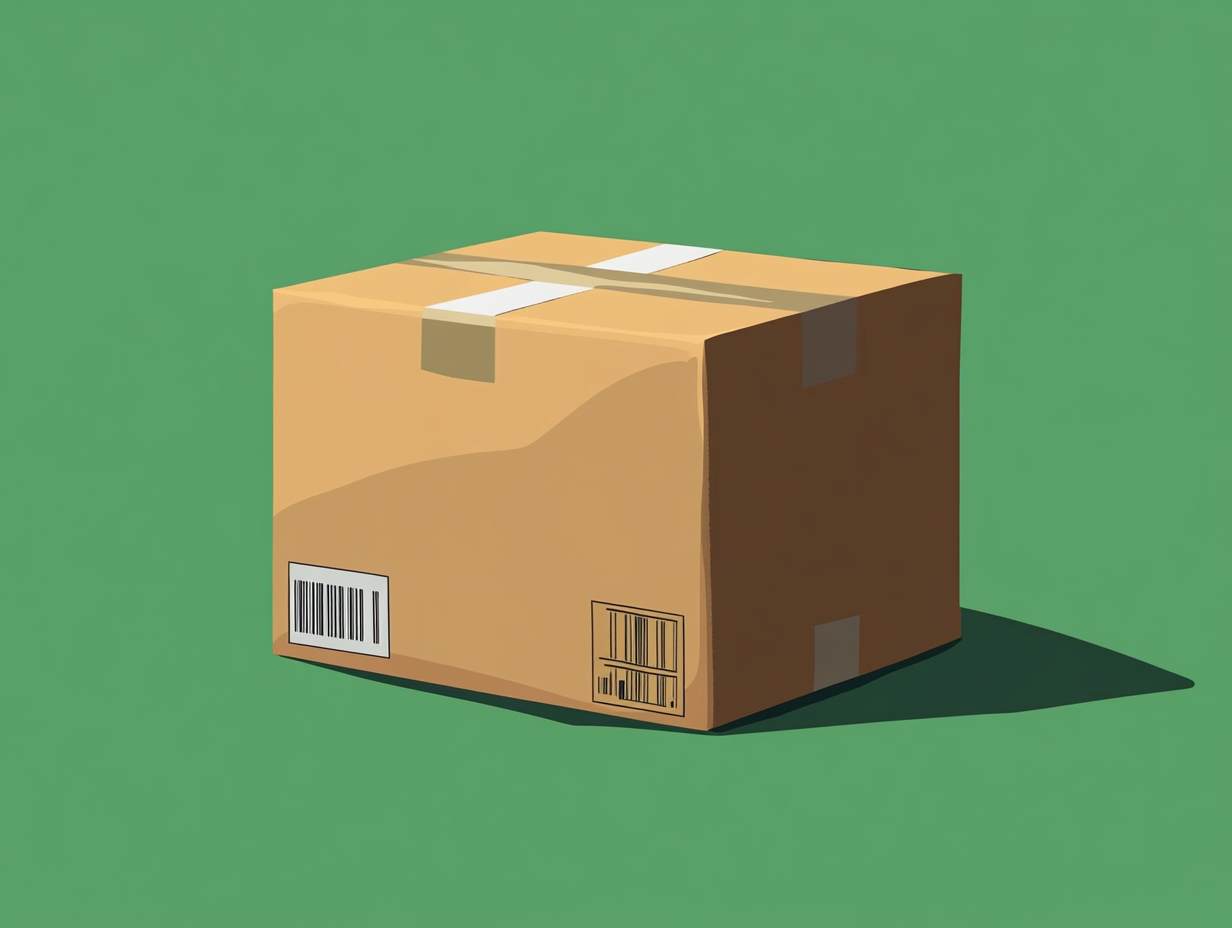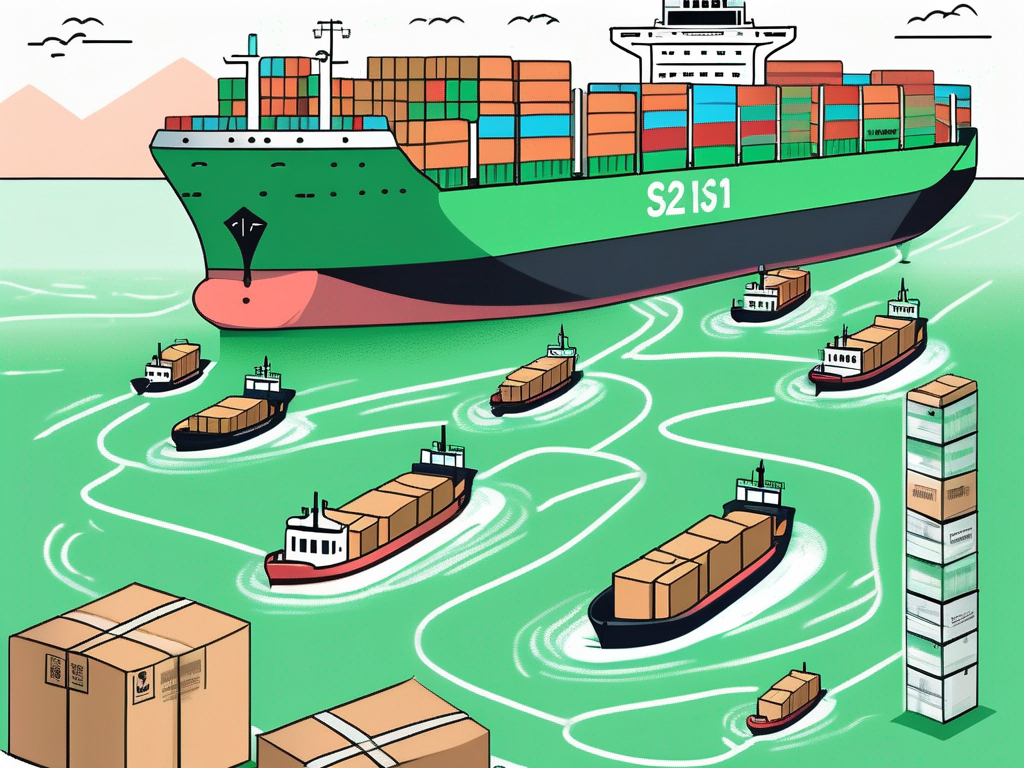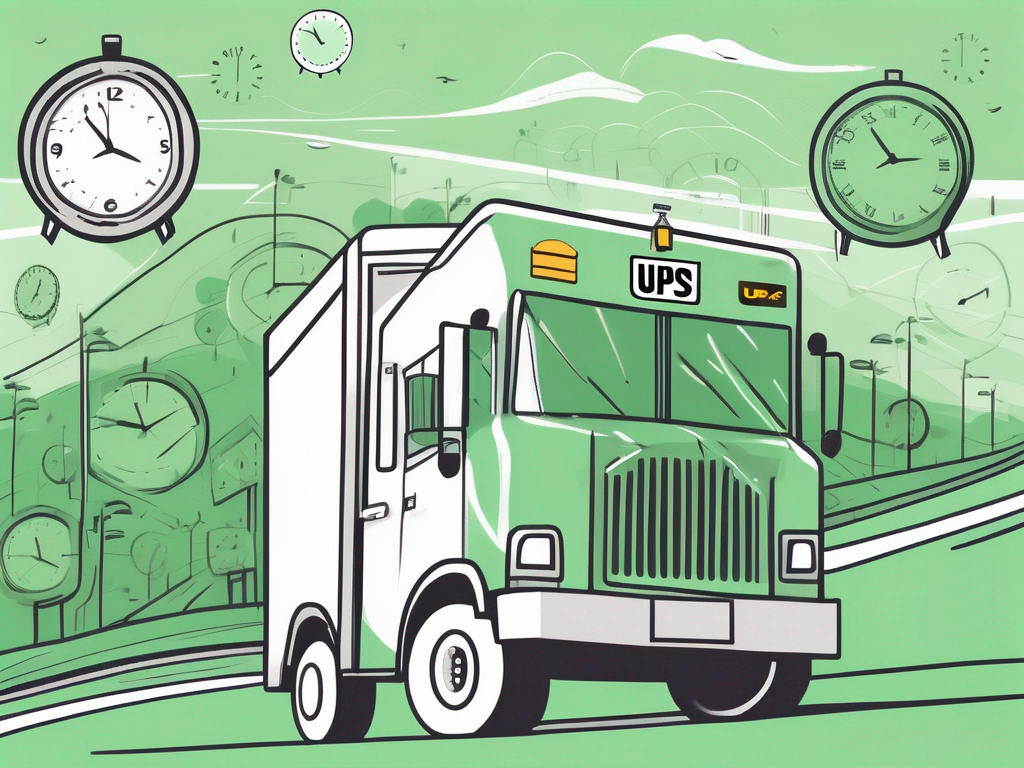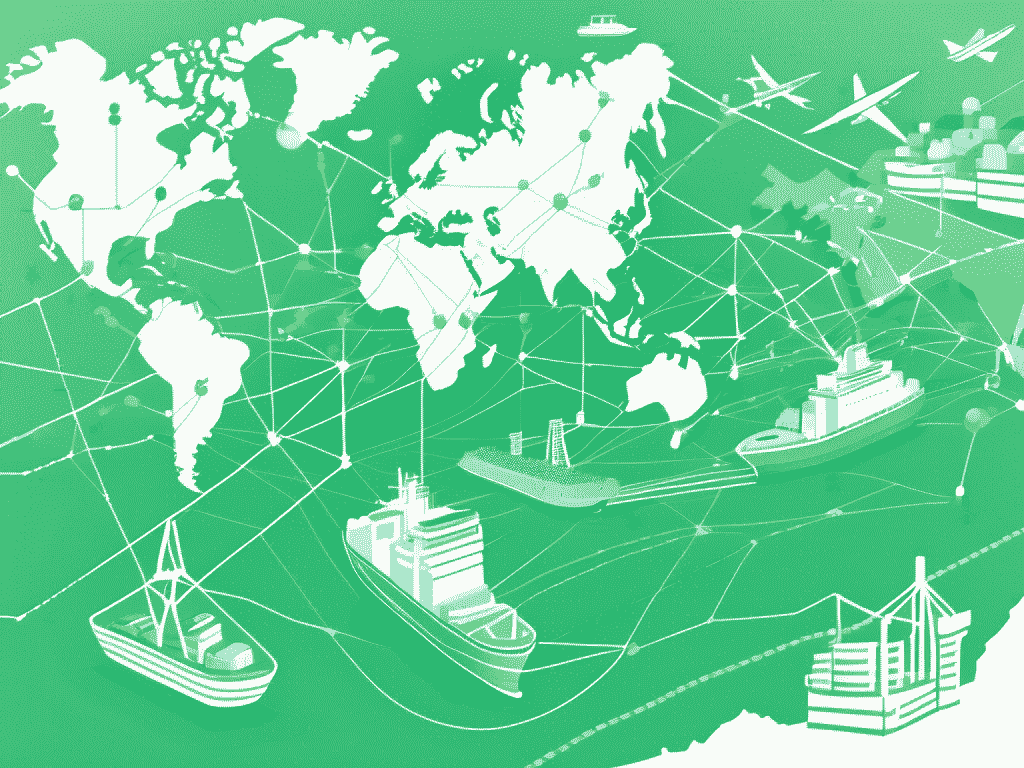Share this
What Does Package Acceptance Pending Mean?
by Shipfusion Team on Jan. 20, 2025

Understanding the various statuses that packages can have is essential to keeping customers informed throughout the shipping process. One of the most common questions businesses get – and sometimes ask themselves – is "What does 'package acceptance pending mean?"
This article has the answer along with a detailed explanation of the processes involved and tips on how to navigate potential issues.
Decoding the Term: Package Acceptance Pending
The phrase "Package Acceptance Pending" generally refers to a specific stage in the shipping process where the package has been picked up by the courier but has not yet been formally accepted into the shipping system. This can occur right after the package transfer from the sender to the shipping company.
The Basic Definition of Package Acceptance Pending
When a package is marked as "Pending," it indicates that the shipping company has not yet completed the necessary processes to acknowledge the package into their system. This could mean that the shipment is still with the carrier, undergoing initial scans at a postal service or USPS facility, or awaiting administrative actions required to finalize shipment acceptance.
Customers often notice this status when they track their packages. It might linger for a short period, signaling that the package is still in transit between locations but hasn't been officially logged into its next stage within the shipping process. This temporary status can sometimes lead to confusion or concern among customers who are eagerly awaiting their deliveries, especially during peak shipping seasons when delays are more common.
The Role of Shipping Companies In Package Acceptance Pending
Shipping companies play a significant role in determining the "Package Acceptance Pending" status. Different carriers have varied internal processes and scanning technologies, which can influence how long a package remains in this status. For example, a major carrier such as FedEx or UPS may have more advanced systems for scanning and processing packages compared to smaller local shipping firms.
The average shipment received by a commercial postal service or USPS facility typically goes through several checks, including security scans and ticketing. The package cannot move forward in the logistics chain until these actions are completed. Factors such as weather conditions, traffic, or operational delays can exacerbate the time a package spends in this stage.
Understanding these nuances can help customers manage their expectations and reduce anxiety as they await their shipments. Many shipping companies provide real-time tracking updates and notifications to keep customers informed about their package's journey, which can alleviate some of the uncertainty associated with a "Pending" or similar shipment received status.
The Process Behind Package Acceptance Pending
Understanding the process that leads to a "Package Acceptance Pending" status can provide valuable insights, especially for those who frequently send or receive packages. The complexities of package handling are often underestimated. Each step in the logistics chain can significantly affect the overall delivery experience, making it essential for both senders and recipients to be aware of what happens behind the scenes.
Steps Involved In Package Acceptance
The first step in the package acceptance process is getting the shipment received. Once collected, the package undergoes an inspection to ensure it adheres to shipping regulations. If it's a UPS, FedEx, or USPS package, drivers scan a special shipping label created for that individual package within the carrier's shipping system. But logging the initial pickup with barcode technology doesn't confirm acceptance yet.
Only after the package arrives at the designated sorting facility, and all checks and scans are complete, does it officially transition from "Pending" or USPS awaiting item to an active status, such as "In Transit" or "Accepted."
Factors such as the technology used for scanning, the training of personnel, and the layout of the shipping company's sorting facility can all impact how quickly a package moves through the acceptance phase. Additionally, some companies have implemented advanced sorting systems that utilize artificial intelligence to streamline operations, further enhancing the speed and accuracy of package processing.
The Timeline of Package Acceptance Pending Status
The duration of the "Package Acceptance Pending" status can vary widely. In some instances, it resolves within a few hours, particularly for local shipments, while in other cases, it can persist for several days. Factors such as the shipping company's operational load, the time of year, and specific shipping routes can heavily influence this timeline. For instance, during peak seasons like the holidays, delays may be more frequent as delivery companies cope with increased volume. Customers may experience longer wait times merely due to overcapacity rather than a problem with their specific package.
Moreover, external factors such as weather conditions can also play a significant role in the timeline. Severe weather events like snowstorms or hurricanes can disrupt transportation networks, leading to extended "Package Acceptance Pending" statuses. Additionally, international shipments may encounter customs delays, further complicating the acceptance process. Understanding these variables can help customers set realistic expectations for their package delivery timelines, allowing them to plan accordingly and avoid unnecessary frustration.
Factors Influencing Package Acceptance Pending Status
Several elements can affect how long a package remains in the "Pending" stage. Understanding these factors can help customers set realistic expectations and insights into potential delays.
Impact of Holidays and Non-Business Days
One of the most significant impacts on package acceptance is tied to holidays and weekends. During such periods, shipping companies may operate under reduced hours or even suspend operations entirely, leading to delays in the acceptance process. For example, if a package is dropped off on a Friday before a holiday weekend, it may remain in a pending state until the following Tuesday or later.
It's not just the major holidays that can cause delays; even smaller, regional holidays can affect local shipping operations. Ecommerce businesses should remain vigilant about local calendars, especially during peak shopping seasons like the winter holidays or back-to-school periods, when shipping volumes increase and logistics networks can become overwhelmed.
Planning ahead for major holidays can help avoid unnecessary frustration and confusion regarding package status.
The Effect of International Shipping on Package Acceptance Pending
International shipping adds another layer of complexity. Packages traversing borders must undergo customs checks, which can significantly delay acceptance. After pickup, a package might spend an extended period in customs waiting for clearance before it is acknowledged by the shipping company, whether it was originally sent using DAP or DDP shipping. This complexity highlights the importance of understanding that international shipments often have longer timelines compared to domestic ones.
Because customs regulations can vary widely from country to country, packages may be subject to different tariffs or restrictions based on their contents. Variability can lead to unexpected delays, especially if the customs documentation is incomplete or incorrect. When arranging logistics, ecommerce businesses should familiarize themselves with the customs requirements of the destination country to ensure paperwork doesn't prolong their final delivery date.
How to Respond to Package Acceptance Pending Status
What does Package Acceptance Pending mean for ecommerce merchants? Well, it's more than just a notification. Businesses play the role of intermediary between shipping companies and end customers. They have the responsibility of communicating every status update from USPS or whatever other service provider is being used.
Tracking Your Package During the Pending Phase
The first step is to utilize the tracking code provided by the shipping company. Most carriers have online tracking functionalities that allow customers to see real-time updates on their packages. Regularly checking these updates can offer insights into where the package currently is in the process.
It is also useful to allow some time before panicking about the pending status. In stable conditions, many packages will transition to an active status within a few hours or a day. Patience during the early stages can often alleviate unnecessary concern. Additionally, some shipping companies provide estimated delivery windows that can help set expectations. Familiarizing yourself with these timelines can provide a clearer understanding of when to anticipate movement in your package's status.
Communication with Shipping Companies During Pending Status
If a package remains in "Pending" for an unusually long time, reaching out to the shipping company's customer service can provide clarity. They may have access to more detailed information regarding the package and can inform you of any issues causing the delay.
It is advisable to keep the tracking number handy during communication for efficient assistance. This proactive approach can help you gain insights into the situation and prepare for any potential outcomes, including rescheduling or preparing for alternate delivery options.
Engaging with them through less-conventional channels like social media platforms can sometimes yield quicker responses, as companies are increasingly attentive to their online reputations and customer feedback.
Resolving Issues Related to Package Acceptance Pending
Even with an understanding of the reasons behind a "Package Acceptance Pending" status, issues can sometimes arise. Knowing how to resolve these can support efficient shipping experiences.
Common Problems and Their Solutions
Common problems related to package acceptance include significant delays due to weather conditions, logistical errors, or heavy shipping volumes. In such scenarios, staying patient and checking updates regularly is often the best approach. Additionally, it can be helpful to monitor local news or weather reports, as extreme weather can impact shipping routes and lead to widespread delays. Understanding the broader context can provide reassurance and help manage expectations.
If the situation does not resolve itself within 48 hours, contacting customer support for your shipping provider can lead to additional assistance. They can often help clarify the cause of the delay and suggest next steps. It's also beneficial to have all relevant information on hand, such as the tracking number, shipping address, and any previous communication with the company, as this can streamline the process and ensure that your concerns are addressed promptly.
When to Seek Help from Customer Service
If a package remains in "Pending" status for more than three business days without any updates, it might be time to seek help from customer service. At this point, the chances of an issue affecting the package's progress increase. Sharing tracking information and reiterating concerns during this communication can help expedite actions taken by the company. Moreover, documenting your interactions with customer service, including names, dates, and the content of conversations, can be invaluable if the issue escalates or requires further follow-up.
In essence, while package acceptance pending is a common stage in the shipping process, taking proactive measures and knowing when to communicate with shipping services can vastly improve your experience and ease any concerns. Furthermore, staying informed about your rights as a consumer regarding shipping delays can empower you in these situations. Many shipping companies have specific policies in place for handling delays, and being aware of these can help you navigate the process more effectively.
What Does Package Acceptance Pending Mean to You?
We've asnwered the question “What does package acceptance pending mean” in a literal sense, but what about its broader meaning to customer satisfaction? The faster your ecommerce business can get parcels to their intended recipient, the better. That's why the fastest-growing brands across North America choose Shipfusion as a third-party logistics (3PL) provider.
With us, you gain access to a fulfillment network that prioritizes efficiency and transparency. Advanced tracking systems and dedicated support team ensure shipments are handled with precision and care, minimizing delays and keeping you informed all 24 hours of the day. Close relationships with USPS, UPS, FedEx, and many other leading shipping carriers mean being able to choose from multiple shipping route and rate options. A seamless shipping experience is only a few clicks away. Contact us to get started today.
Share this
You May Also Like
These Related Articles

How Section 321 Imports Unlock Duty Savings

Does UPS Deliver Early? Here’s How UPS Delivery Schedules Work

What Does the Future of Cross-Border Shipping Hold?
- April 2025 (18)
- March 2025 (26)
- February 2025 (26)
- January 2025 (37)
- December 2024 (16)
- November 2024 (23)
- October 2024 (22)
- September 2024 (27)
- August 2024 (9)
- July 2024 (8)
- June 2024 (5)
- May 2024 (8)
- April 2024 (8)
- March 2024 (6)
- February 2024 (6)
- January 2024 (5)
- December 2023 (3)
- November 2023 (3)
- October 2023 (5)
- September 2023 (4)
- August 2023 (2)
- July 2023 (1)
- June 2023 (4)
- March 2023 (2)
- October 2022 (1)
- September 2022 (5)
- August 2022 (4)
- July 2022 (7)
- June 2022 (4)
- May 2022 (4)
- April 2022 (6)
- March 2022 (2)
- February 2022 (1)
- January 2022 (3)
- December 2021 (2)
- November 2021 (4)
- October 2021 (2)
- September 2021 (5)
- August 2021 (4)
- July 2021 (4)
- June 2021 (3)
- May 2021 (2)
- April 2021 (3)
- March 2021 (3)
- February 2021 (3)
- January 2021 (2)
- December 2020 (4)
- November 2020 (2)
- October 2020 (4)
- September 2020 (2)
- July 2020 (5)
- June 2020 (4)
- May 2020 (2)
- April 2020 (2)
- March 2020 (4)
- February 2020 (1)
- December 2019 (1)
- May 2018 (1)
- March 2018 (2)
- February 2018 (3)
- January 2018 (3)
- November 2017 (3)
- July 2017 (4)
- March 2017 (3)
- February 2017 (5)
- January 2017 (3)
- December 2016 (4)
- November 2016 (6)
- October 2016 (6)
- October 2015 (1)
- September 2015 (1)
- June 2015 (3)
- May 2015 (3)
- August 2014 (1)
- July 2014 (1)
- March 2014 (1)
- February 2014 (1)